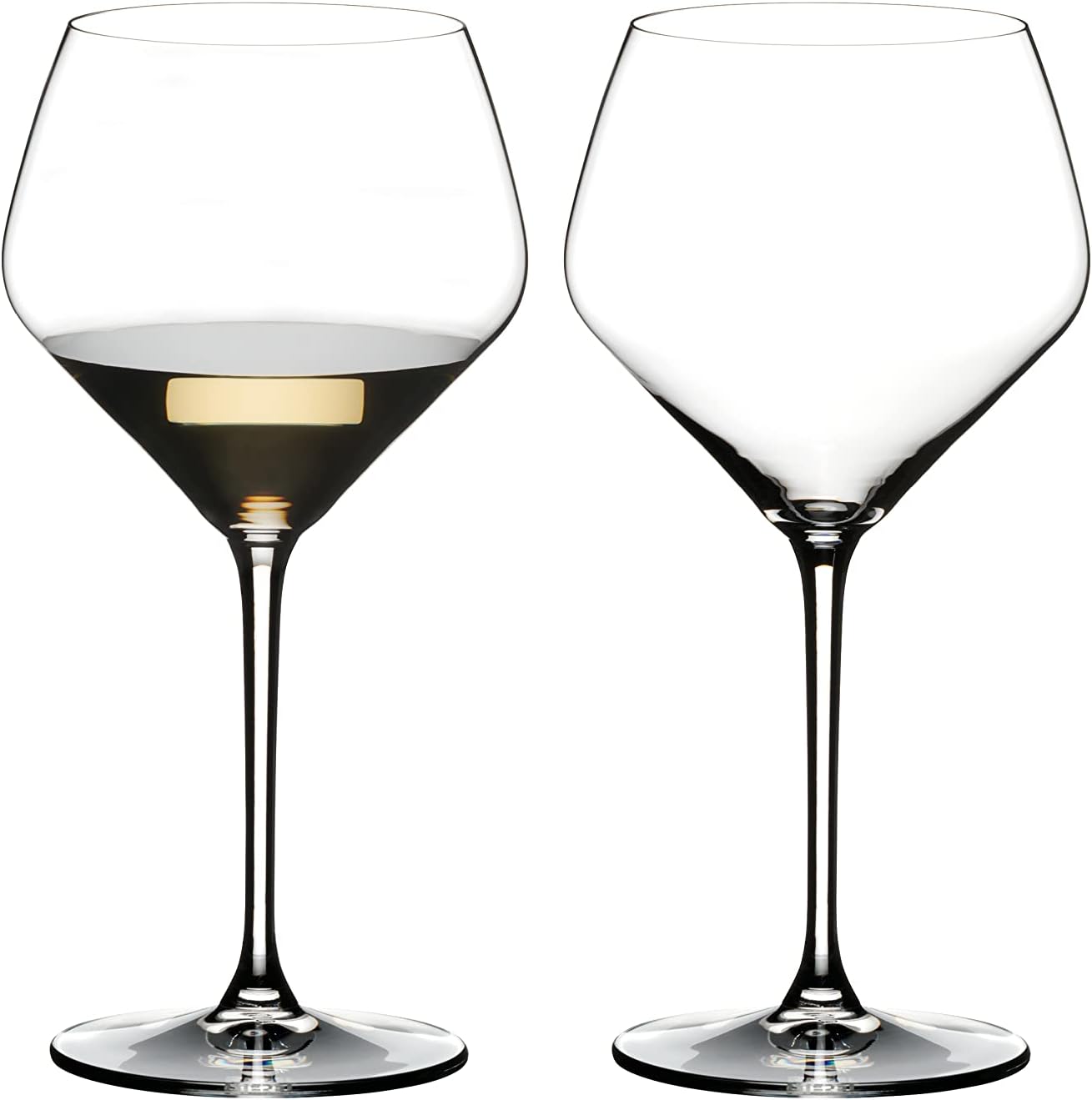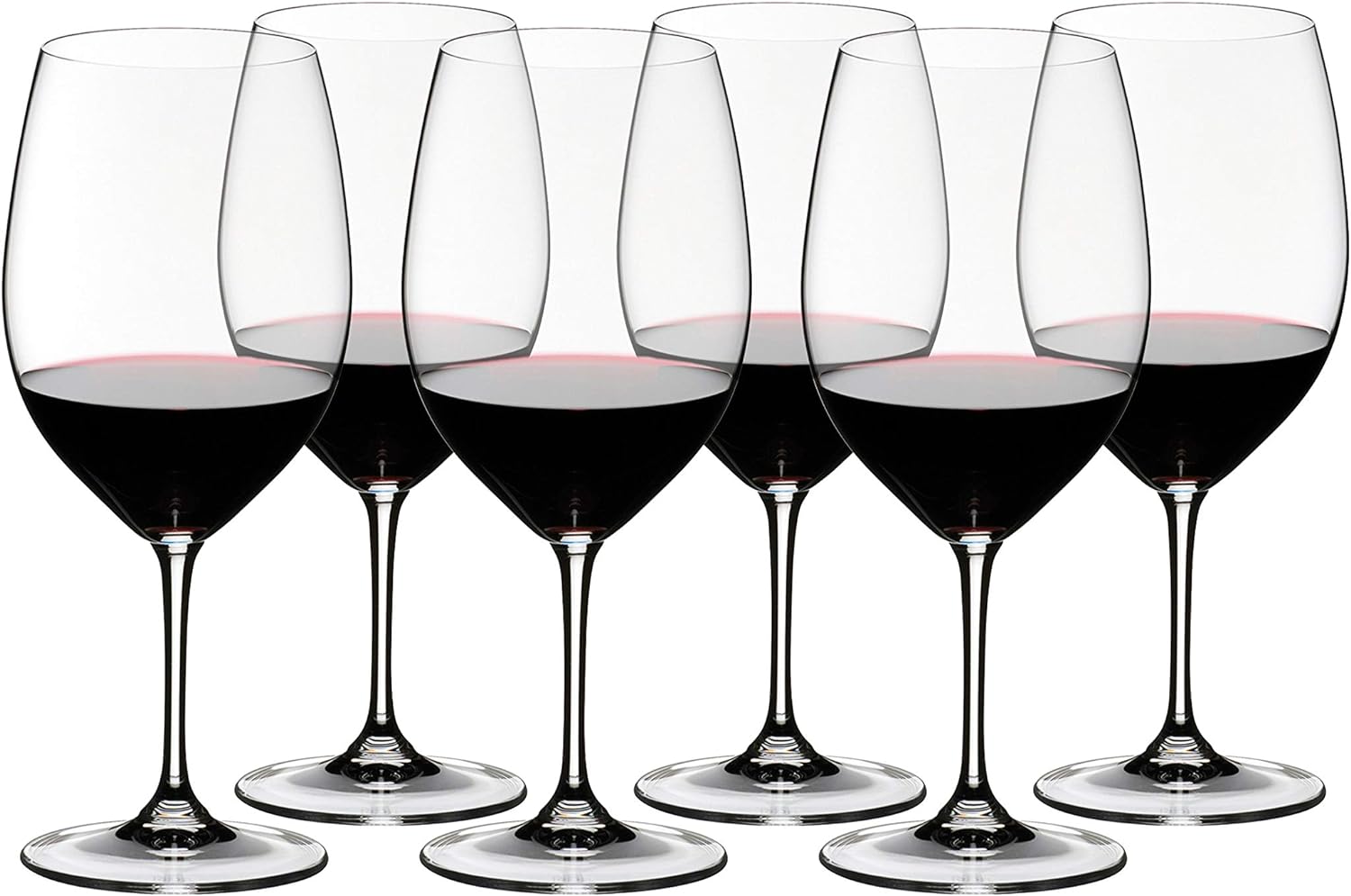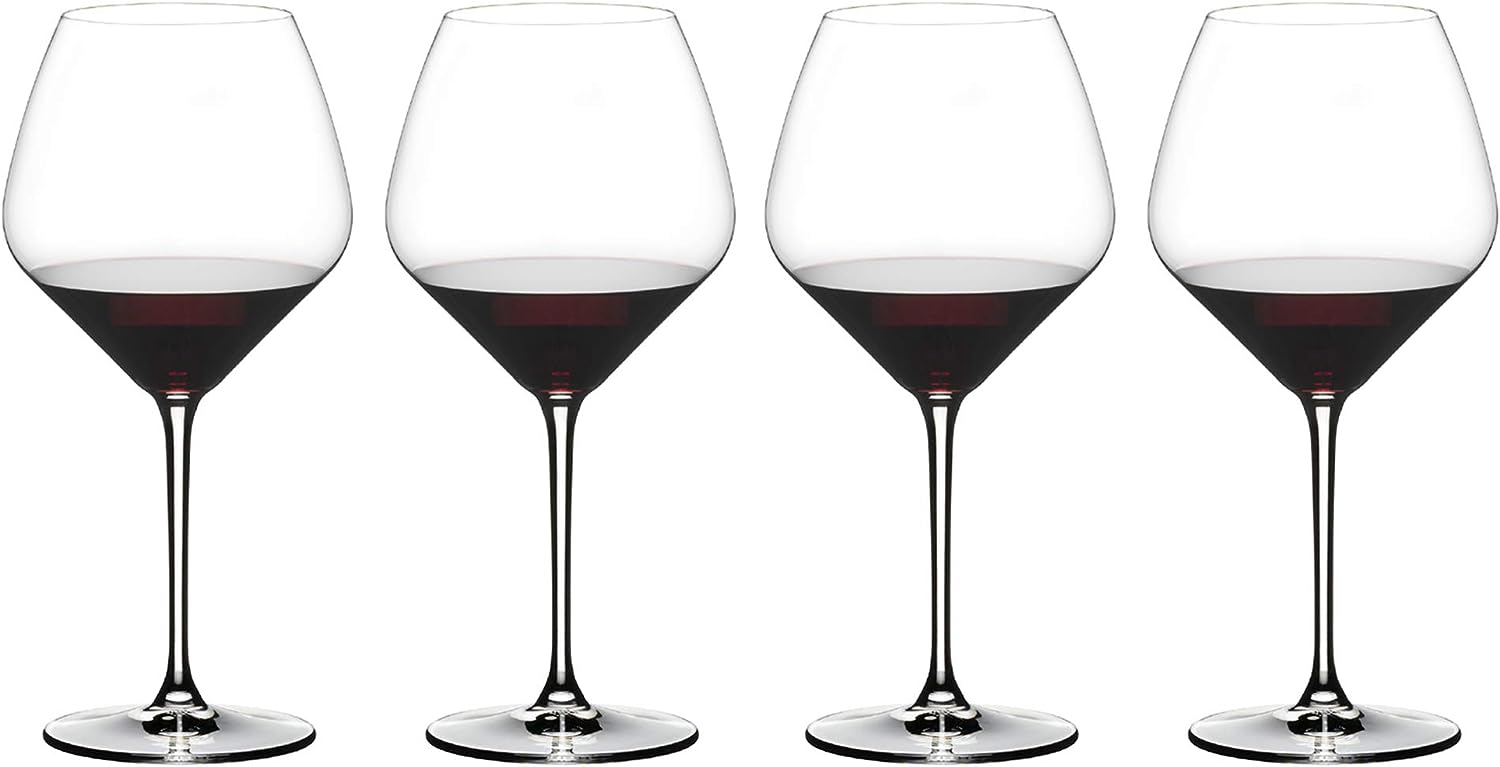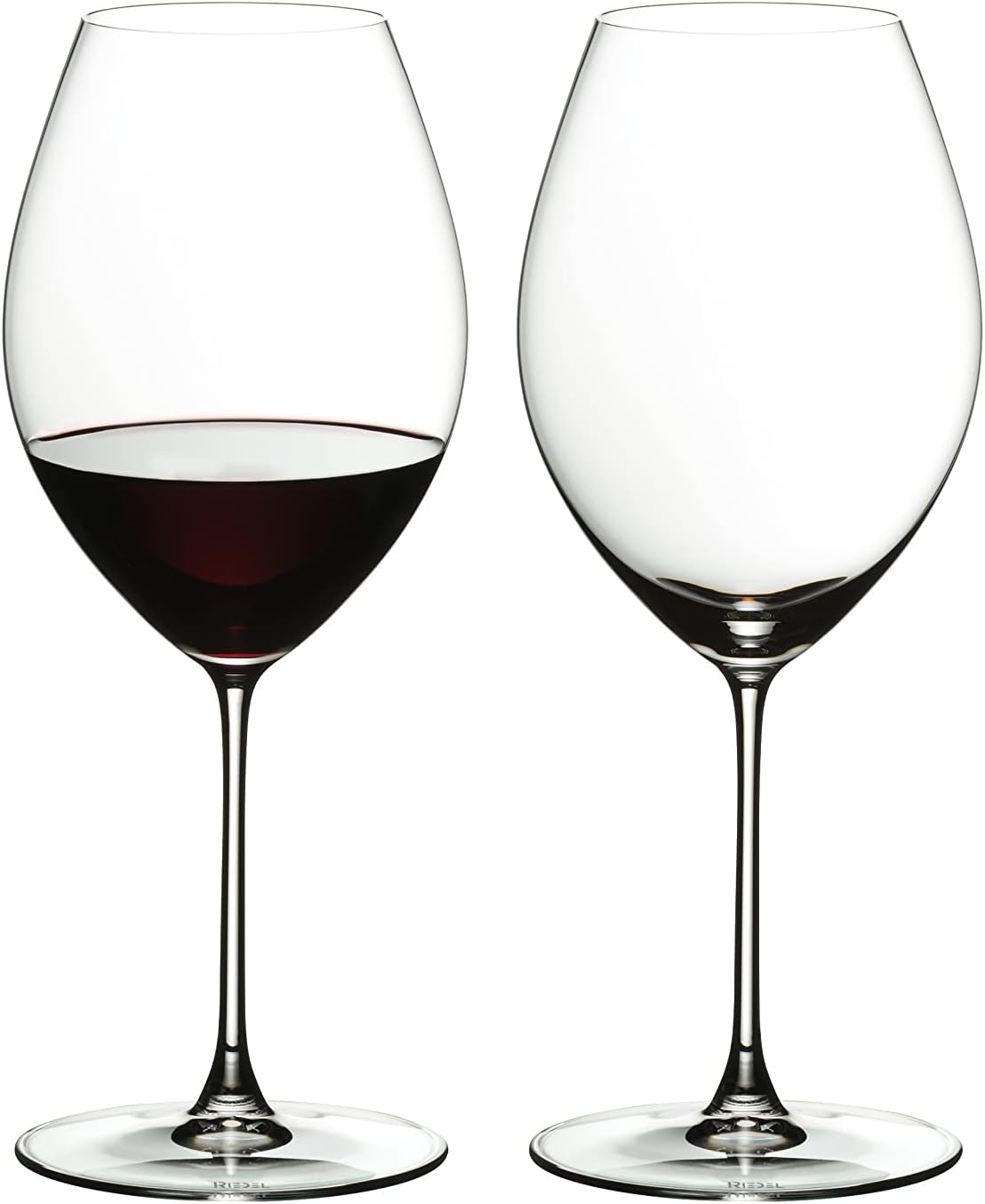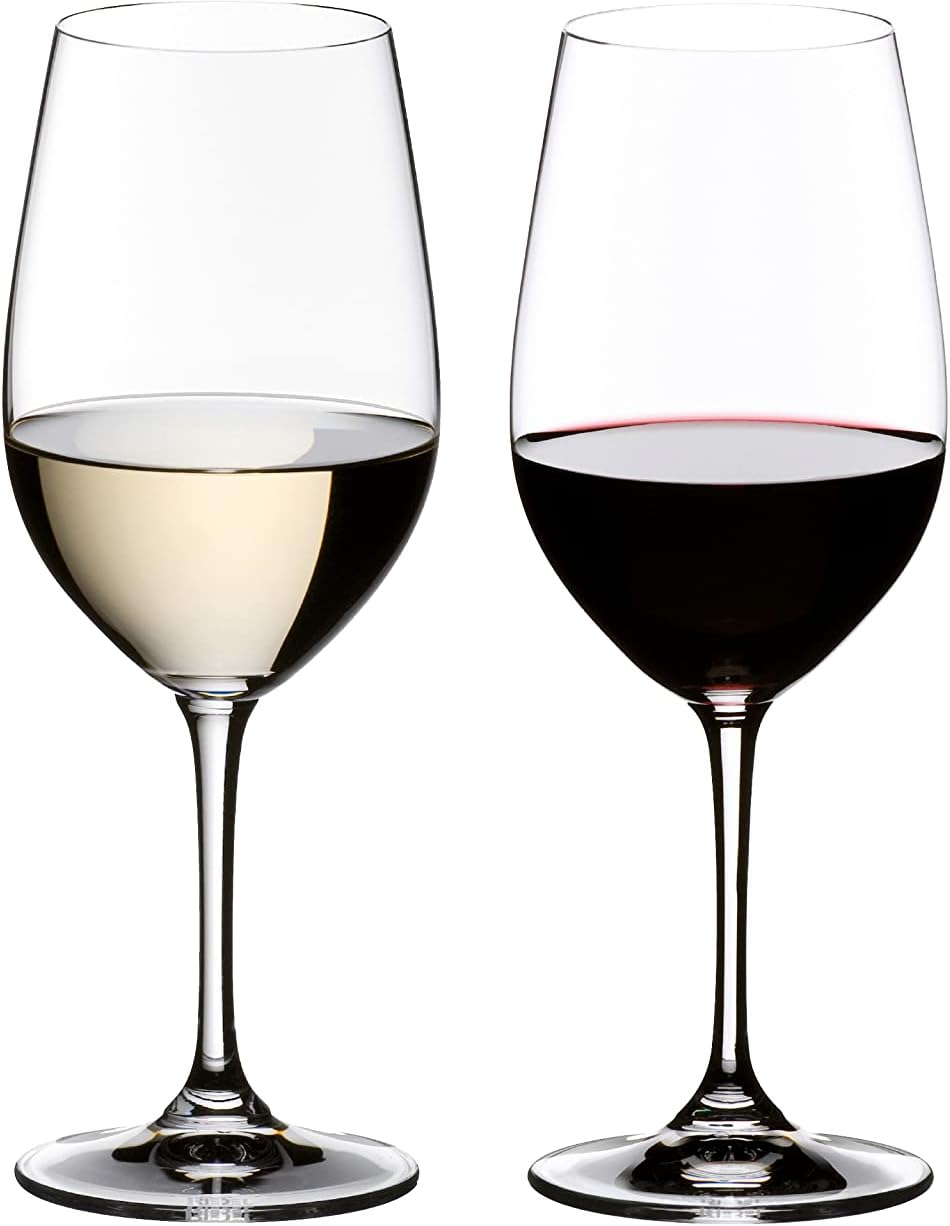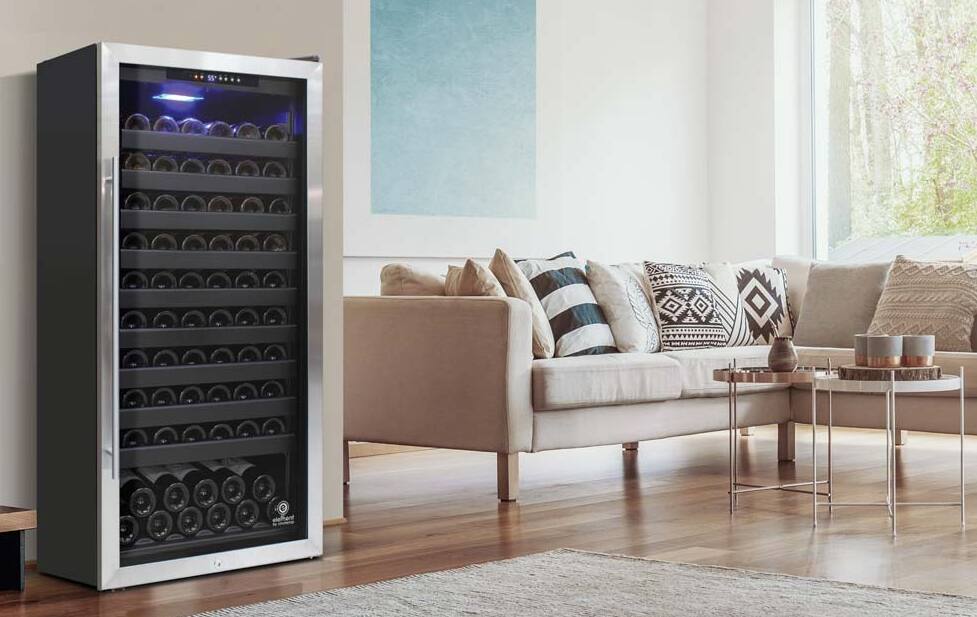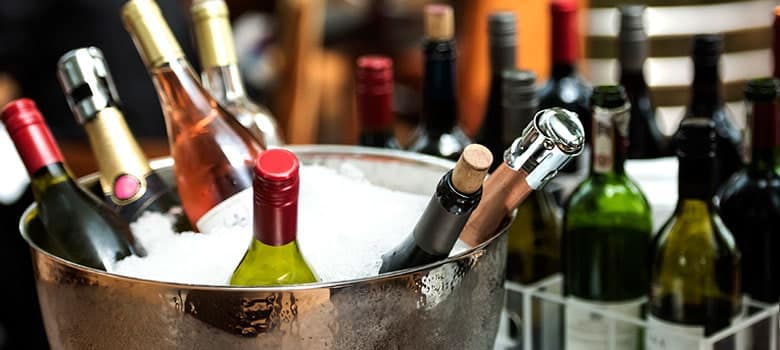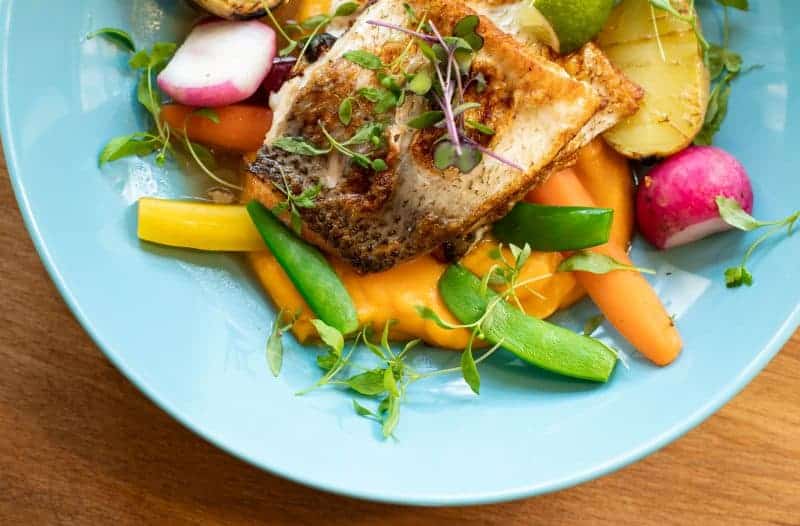How To Buy The Best Wine Glass
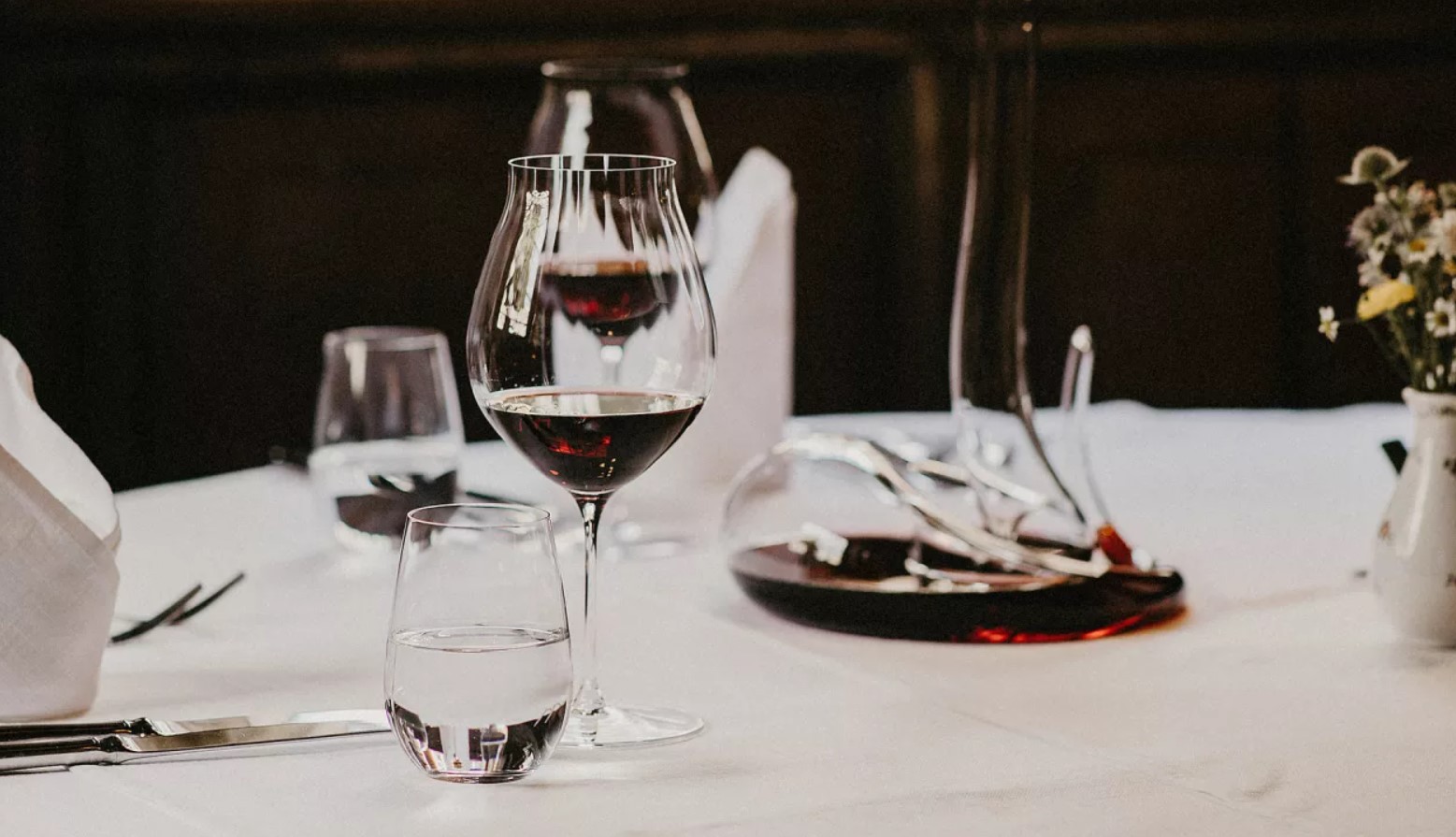
When it comes to enjoying a glass of wine, there’s more to the experience than the mere contents of the bottle. The vessel you choose to pour that wine into can significantly impact the aroma, taste, and overall appreciation of the wine. But with so many available options, how do you pick the best one?When searching for the ideal wine glass, several crucial factors should be considered. Firstly, the type of wine being served is paramount as different wines require specific wine glasses and shapes to to aerate the wine, concentrate aromas, and guide it to the appropriate parts of the palate. For example, a Bordeaux glass suits bold red wines like Cabernet Sauvignon, while a Champagne flute preserves effervescence and captures delicate sparkling wine aromas. Secondly, the shape and size of the glass are pivotal in enhancing aroma and flavor. Look for glasses with a narrowing bowl towards the rim to concentrate aromas and an adequate bowl size for swirling without spilling. Thirdly, prioritize glasses made of high-quality material. Crystal, with its lead content, provides clarity, brilliance, and resonance, elevating the visual and sensory aspects of wine appreciation. Consider stemmed vs stemless glasses. While stemless wine glasses have gained popularity for their casual appeal and stability, stemmed glasses offer several advantages. They prevent heat from your hands, warming the wine, allow for swirling without spilling, and showcase the wine’s color better. However, the choice between stemmed and stemless ultimately depends on personal preference and the occasion. Lastly, consider the price vs value ratio. Investing in a quality wine glass can significantly enhance your wine-drinking experience. While premium glasses may have a higher price tag, their durability, and impact on wine appreciation often justify the investment, making it a worthwhile journey in enhancing one’s wine experience. In this comprehensive guide, we’ll delve deeper into the world of wine glasses, exploring the various types available, uncovering the best producers in the industry, and providing expert tips on how to select the perfect wine glasses for any occasion.
The history of wine glass
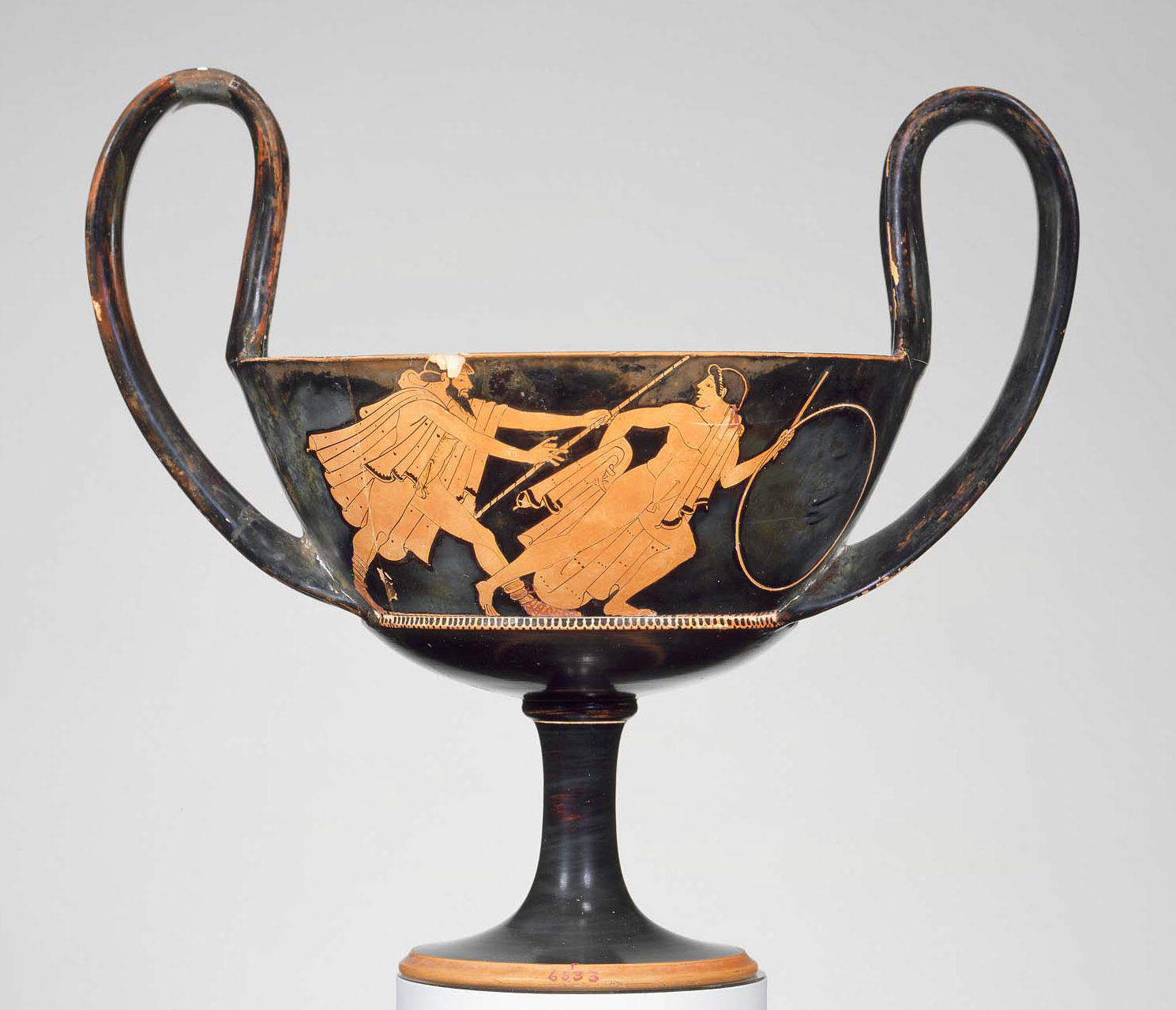
The history of wine glasses is a fascinating journey that weaves together the realms of art, science, and sociocultural evolution.
From humble beginnings to the intricately designed masterpieces of today, the evolution of wine glasses is a testament to humanity’s profound connection with the vine.
- Ancient vessels: The origins of wine consumption date back thousands of years, and the vessels used to drink it were as diverse as the civilizations that crafted them. In ancient times, early imbibers used a variety of natural materials such as gourds, animal horns, and even shells to enjoy their fermented libations. As civilizations progressed, these rudimentary vessels evolved into more sophisticated clay amphorae, which not only facilitated consumption but also allowed for storage and transport.
- The birth of glass: The true transformation of wine vessels came with the advent of glassmaking. The ancient Romans, famed for their pioneering innovations, began producing glass vessels that could be shaped into more aesthetically pleasing forms. The Roman technique of glassblowing revolutionized the production process, enabling the creation of delicate goblets with intricate designs. These early glass goblets, known as “kantharos,” showcased the growing appreciation for the aesthetics of wine consumption.
- Medieval Europe: With the fall of the Roman Empire, Europe experienced a shift in cultural practices. The Middle Ages saw the rise of Christianity and the central role of the church. This influence extended to wine vessels, as the chalice became a symbol of communion. Craftsmen began producing ornate chalices made of precious metals and adorned with gems, reflecting the sacredness of the wine within. It was during this period that the iconic stem we associate with wine glasses emerged. The practical reason for the stem was to prevent the hand from warming the contents of the glass, but it also opened up possibilities for more elaborate and elegant designs.
- Renaissance elegance: The Renaissance marked a resurgence of interest in classical art and culture, and this revival had a profound impact on wine glass design. Venetian glassmakers, renowned for their craftsmanship, began producing delicate and elaborately decorated wine glasses. These glasses featured intricate patterns, vibrant colors, and elaborate stems, transforming wine consumption into a multisensory experience.
- Enlightenment precision: The Age of Enlightenment brought a shift in focus from opulence to functionality. Wine glass design underwent a transformation toward more rational forms. The shape of the glass bowl started to evolve to enhance the drinker’s experience. The narrower and more elongated bowl of white wine glasses, for instance, helped retain the wine’s delicate aromas, while red wine glasses with broader bowls allowed for better aeration.
- Industrial revolution and modernization: The industrial revolution mechanized glass production, making wine glasses more accessible to a wider range of people. Machine-blown glasses reduced production costs and allowed for consistent quality. This era also witnessed the standardization of glass shapes for various wine styles, enhancing the appreciation of wine’s subtleties.
- Contemporary expressions: In the modern era, wine glass design has become an amalgamation of artistic expression and scientific precision. Innovations in materials, such as crystal glass, have elevated the clarity and brilliance of wine glasses. Designers today experiment with shapes, sizes, and even the thickness of glass to manipulate the way wine interacts with air and the senses.
The subtle art of wine glass
Wine glasses are not mere vessels for holding liquid; they are instruments that shape the way we perceive wine.
The nuances in design, shape, and material can significantly influence the bouquet, taste, and overall enjoyment of a fine wine. And yes, there is scientific proof to back up the aforementioned.
Wine glasses are not just utilitarian objects; they are carefully designed tools that enhance the sensory experience of wine consumption.
The shape, size, and material of the glass can influence how the wine interacts with the air, how its bouquet is released, and how its flavors are delivered to your palate.
Different types of wine glasses are designed to highlight the unique characteristics of various wines, from red to white to sparkling.
Certain glass shapes are tailored to specific types of wine. For example, Bordeaux, Cabernet, and Merlot red wine glasses typically have larger bowls that allow the wine to breathe and emphasize the bold flavors of these red varietals. Syrah, Shiraz, and Sangiovese red wine glasses have slightly smaller bowls to concentrate the aromas.
On the other hand, white wine glasses with narrower bowls help preserve the delicate aromatics and maintain cooler serving temperatures.
What are the parts of a wine glass?
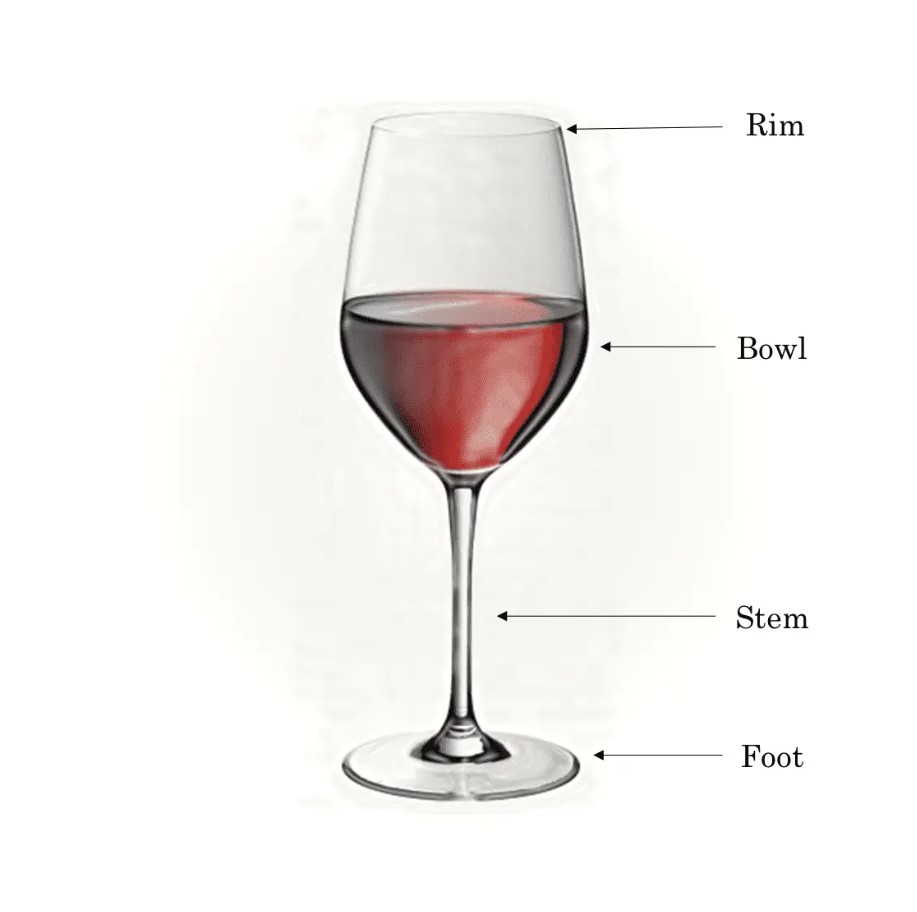
A wine glass typically consists of four parts:
- The base: Providing foundational support is the base, the bottommost part of the glass. Essentially, the base serves as the underpinning, whether the glass is held in hand or rested upon a surface. Analogous to the rim, the shape and size of the base are subject to variation based on the glass type, ideally harmonizing proportionately with the other elements to bestow equilibrium.
- The stem: When it comes to gripping a wine glass, the stem emerges as the utmost crucial element, positioned at the glass’s center stage. The significance of stems lies in their ability to let you clutch the glass sans contact with the bowl, thus enabling the swirling and aeration of the wine. Ensuring you hold the stem is imperative due to the potential for the warmth from your hands to raise the wine’s temperature, potentially causing a complete transformation of its aromas and flavors. Typically, crisp, younger white wines are served at temperatures 50°F or 10°C to 54°F or 12°C, allowing their vibrant acidity to shine and their aromas to unfurl gradually as you savor each sip. Failing to grasp the wine by its stem can result in elevated warmth and a perceptible increase in sweetness on the palate. In the case of red wines, the recommended serving temperature hovers from 60°F or 15°C to 65 °F or 18°C. Holding these wines by their stems facilitates the delicate swirling motion, gradually ushering forth the bouquet as the wine gently warms.
- The rim: At the uppermost edge of the wine glass, you encounter the rim, a key determinant of the wine’s interaction with oxygen. The rim’s diameter varies based on the glass type, and this feature has a tangible impact on the wine’s exposure to air. Given that white wines benefit from limited air exposure, the rims of glasses designed for them tend to be more petite. The dimensions and contour of your wine glass’s rim substantially influence your entire tasting journey.
- The bowl: Constitutes the nucleus of your entire wine-drinking experience, for it cradles the very essence of your wine. The receptacle captures and presents the liquid’s character. Red wine glasses are characterized by broader bowls, whereas their white wine counterparts feature more slender forms. Since swirling is customary with red wines, the broader bowl aids in minimizing spills. Swirling red wine aids in gradually liberating its aromatic nuances into the surrounding air.
Choosing the right wine glass is about aligning the glass shape with the wine variety. Ultimately, the goal is to allow the wine to express its full potential by choosing the appropriate glass that complements its characteristics.
How to hold a wine glass

For an optimal tasting experience, it’s recommended to grasp a wine glass by its stem, ideally near the base, while avoiding enclosing the bowl with your hand.
This practice serves to prevent the transfer of your body heat to the bowl, thus maintaining the wine at its perfect serving temperature.
The act of holding the glass by its stem also creates a separation between your hand and your nose when you take a sip. This separation is crucial as aromas play a significant role in influencing taste.
Interestingly, if you were to hold the glass by its rim, you might inadvertently pick up additional scents such as those from lotions or perfumes. This could potentially interfere with your ability to fully appreciate the authentic flavors and aromas of the wine.
Here are a four common ways to hold a wine glass:
- Three-finger hold: Hold the wine glass by the stem between your thumb, forefinger, and middle finger. These fingers provide stability and allow you to easily swirl the wine without warming it with your hand.
- Pinch hold: Pinch the stem of the wine glass between your thumb and index finger, with your middle finger supporting the stem from underneath. This method offers a more delicate grip while still providing control over the glass.
- Two-finger hold: Place your thumb near the middle of the stem and wrap your index finger around one side, supporting the other side of the stem with your other fingers. This technique is often used to provide a more casual hold while still avoiding the bowl.
- Base hold: Hold the base of the wine glass between your thumb, forefinger, and middle finger. This method is particularly useful when you want to keep the wine at a very cool temperature, as your hand is farthest from the bowl.
Holding a wine glass properly demonstrates your familiarity with wine etiquette and allows you to fully appreciate the wine’s appearance, aroma, and flavor without interference.
When holding a stemmed wine glass, such as a red or white wine glass, it’s generally recommended to hold it by the stem rather than the bowl.
The key is to avoid gripping the bowl of the glass, which can inadvertently alter the wine’s characteristics and compromise the tasting experience.
In contrast to traditional stemmed wine glasses, stemless wine glasses lack a distinct base or stem. Instead, they rest directly on the bottom of the bowl, presenting a different aesthetic and functionality.
Why is it important to hold a wine glass properly?
Holding a wine glass properly serves a couple of purposes:
- prevents the heat from your hand from affecting the temperature of the wine,
- avoids leaving fingerprints on the bowl that can obstruct your view of the wine’s color and clarity,
- enables you to swirl the wine to aerate it and release its aromas without spilling it.
One important reason for holding a wine glass by the stem is to preserve the wine’s temperature. The heat from your hands, especially your palms, can alter the wine’s temperature.
Wine’s temperature plays a crucial role in bringing out its intended flavors and aromas. Red wines, for instance, are generally served at slightly warmer temperatures than white wines. By holding the glass by the stem, you avoid transferring body heat to the wine, allowing it to remain at the desired temperature.
Additionally, holding the wine glass by the stem prevents smudging and fingerprints on the bowl. The bowl of the glass is where you observe the color and clarity of the wine, which can provide valuable insights into its quality and age. Smudges and fingerprints can obscure the visual assessment and affect the overall presentation of the wine.
Furthermore, gripping the stem of the wine glass makes it easier to swirl the wine. Swirling is a fundamental technique in wine tasting, as it helps . When you hold the glass by the stem, you have better control over the swirling motion, enhancing the wine’s aromatic profile.
Does the shape of a wine glass really matter?
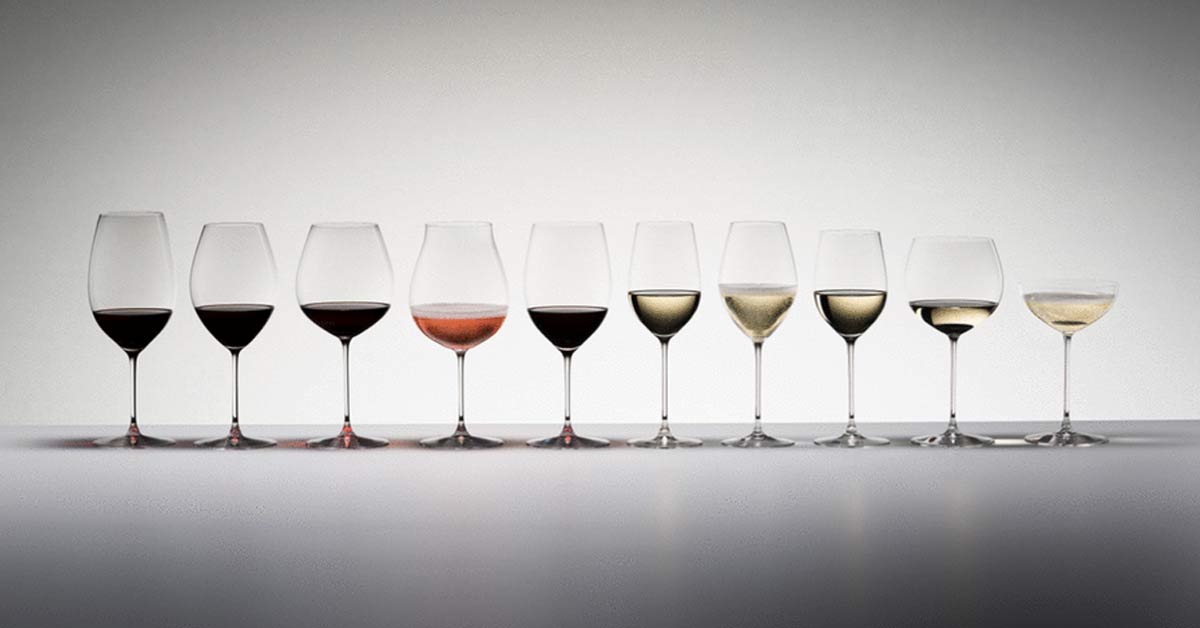
The shape of a wine glass plays a pivotal role in channeling the wine’s aromas to the nose and directing it to specific taste receptors on the palate, and it can have a significant impact on the overall wine-drinking experience.
The design of the glass, including its bowl shape, rim diameter, and stem length, can affect how the wine smells, tastes, and even looks.
- One of the key reasons why the shape of a wine glass matters is its effect on aromas. The bowl shape of the glass plays a crucial role in concentrating and directing the aromas of the wine toward your nose. Different wine varietals have distinct aromatic compounds that are released when the wine is swirled and exposed to oxygen. The shape of the glass can either trap these aromas or allow them to be more pronounced, influencing your perception of the wine’s bouquet.
- Moreover, the size of the glass bowl impacts the surface area of the wine exposed to air. This increased surface area facilitates aeration, which can soften harsh tannins and open up the flavors of the wine. A larger bowl is generally preferred for red wines, as it allows the wine to breathe and develop complexity. On the other hand, white wine glasses tend to have a more narrow bowl to preserve their delicate aromas.
- The design of the rim also matters. A narrower rim concentrates the wine as it enters your mouth, directing it to specific taste receptors. A wider rim, on the other hand, spreads the wine across your palate, potentially enhancing its balance and subtleties.
However, while the shape of the glass can enhance the wine experience, it’s important to note that there isn’t a one-size-fits-all solution. Different wine glasses are designed to complement specific types of wine.
For instance, Bordeaux glasses have a tall, broad bowl to accommodate bold reds like Cabernet Sauvignon, while Burgundy glasses have a wider bowl to suit more delicate reds like Pinot Noir.
Using the right glass can enhance the wine’s characteristics, but it’s not guaranteed to drastically change the taste of the wine if used incorrectly.
While the impact of glass shape is notable, it’s essential to remember that wine enjoyment is also subjective, and personal preferences play a role in how you experience wine.
Does the shape of a wine glass change the taste?

The shape of a wine glass does indeed impact the taste of wine. Experts have conducted various experiments to demonstrate the impact of glass shape on wine taste. The science behind this phenomenon lies in how our senses, particularly our sense of smell, influence our perception of taste.
Different glass shapes can highlight different aspects of the wine, making it taste more intense, balanced, or even altering its texture on the palate.
Through these studies, it has been proved that the shape of a wine glass can concentrate the wine’s aromas, enhancing the expression of its varietal characteristics. Different shapes can emphasize specific aspects of the wine, such as its bouquet, acidity, and texture.
The shape of the glass then plays a crucial role in how the wine flows to the opening, allowing different parts of the wine to come into contact with different parts of your palate.
One key aspect is the size of the glass, which controls the amount of air in contact with the wine. This aeration process can help open up the aromas and flavors of the wine as it reacts with oxygen.
The curvature of the glass guides the wine to different parts of the tongue, enhancing the perception of flavors. For example, a glass with a narrower opening can help concentrate the aromas towards your nose, enhancing your ability to detect the nuanced scents of the wine.
In fact, different wines can display distinct characteristics when served in various types of glasses. This phenomenon is significant enough that even experienced wine enthusiasts can notice a difference in taste based on glass shape.
The diameter of the rim also affects the speed at which the wine flows into your mouth. A narrower rim can slow down the wine, giving you more time to appreciate its aroma and flavors.
Unlike other types of glasses, such as martini glasses that slope outward, wine glasses typically have sides that bow inward toward the rim.
This design directs the aromas toward the nose, allowing the drinker to fully experience the wine’s bouquet. Wine scientists explain that the shape of a wine glass has a functional design that is tailored to tasting and enjoying wine.
It’s important to note that while glass shape can influence the tasting experience, it doesn’t fundamentally change the composition of the wine.
Rather, it alters how the wine’s aromas are perceived, how it interacts with the palate, and how the overall tasting experience is enhanced.
Wine glasses are designed to work in harmony with the complex aromatic and flavor profiles of different wines, making the act of wine tasting a multisensory experience.
The science of how your wine glass shape affects taste
Although taste is often regarded as a matter of personal preference, researchers from the Institute of Biomaterials and Bioengineering at Tokyo Medical and Dental University have contributed their insights to this ongoing discussion.
In a fascinating study, a Japanese medical group delved into the realm of ethanol vapors, revealing the profound influence of glass shapes on the distribution and density of these vapors.
This discovery sheds light on why vapors matter – they are the carriers of aromatic compounds that orchestrate the symphony of flavors in wine.
Led by Professor Kohji Mitsubayashi, the team employed an innovative imaging tool known as a sniff-cam to conduct their investigation. Their focus was on visualizing the dispersion of ethanol vapors emanating from glasses with distinct shapes.
During one segment of the research, they compared three glass types:
- the traditional wine glass,
- a straight glass, and
- a cocktail glass.
By pouring an identical quantity of wine into each vessel and examining them at a precisely controlled temperature of 13°C or 55°F, the obtained images divulged a fascinating outcome.
Specifically, a distinctive ring-shaped vapor pattern emerged along the periphery of the wine glass.
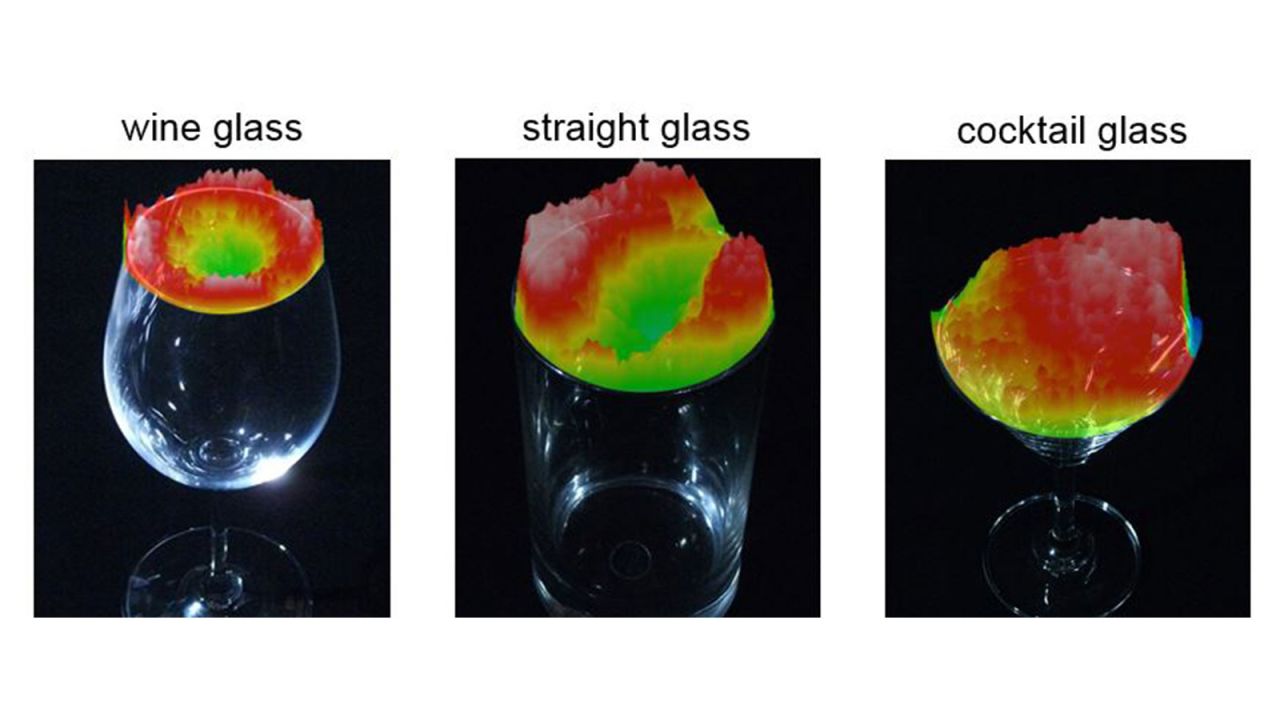
Mitsubayashi elucidated that this unique pattern significantly enriches the wine-drinking experience by isolating the aroma of the wine from the scent of ethanol, often akin to that of vodka, preventing any intrusive overlap.
The sniff-cam records underscored this contrast, indicating notably stronger intensities of ethanol vapor in the alternative two glass shapes.
The research report culminates by highlighting the wine glass’s intricate and purpose-driven design, which serves to heighten the tasting encounter and the enjoyment of the wine’s bouquet.
Benefits of using specific wine glass shapes
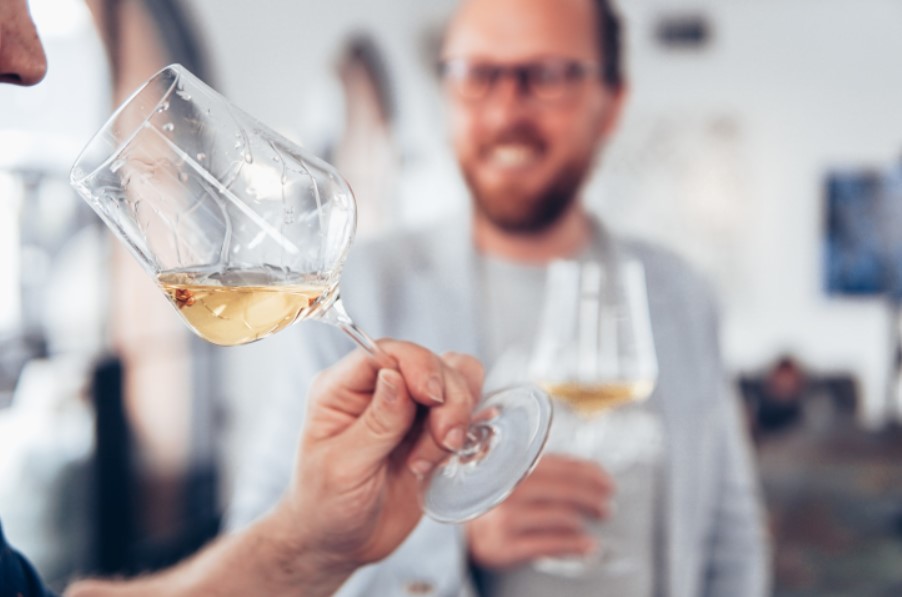
One of the key benefits of using specific wine glass shapes is their ability to optimize the release of aromas and flavors, enhancing the sensory experience of different wine varietals.
The shape of the glass impacts the concentration of aromas, the release of flavors, and the overall enjoyment of the wine.
Considering the type of wine you’re drinking and selecting an appropriate glass shape can greatly contribute to a more nuanced and pleasurable tasting experience.
The increased surface area in a wine glass, especially in those with a wider bowl, facilitates the release of volatile aromatic compounds.
This is why experts often recommend swirling the wine in the glass – it enhances aeration and allows the wine to “open up.” Swirling helps release trapped aromas, making them more accessible to your senses.
The second benefit is closely tied to winemakers and glass manufacturers that have recognized the importance of matching glass shapes to wine varietals. This realization has led to the creation of varietal-specific glasses.
These glasses are meticulously designed to enhance the unique characteristics of different wines.
Selecting the right wine glass for your favorite varietal can truly be an art. When stocking your glassware collection, it’s beneficial to consider the types of wines you enjoy the most.
In conclusion, the benefits of using specific wine glass shapes go beyond aesthetics. These glasses are thoughtfully designed to elevate your wine experience by enhancing aromas, flavors, and overall enjoyment.
Understanding how the shape of a glass impacts the wine can provide a new layer of appreciation for the intricate world of wine tasting.
The ultimate guide to different types of wine glasses
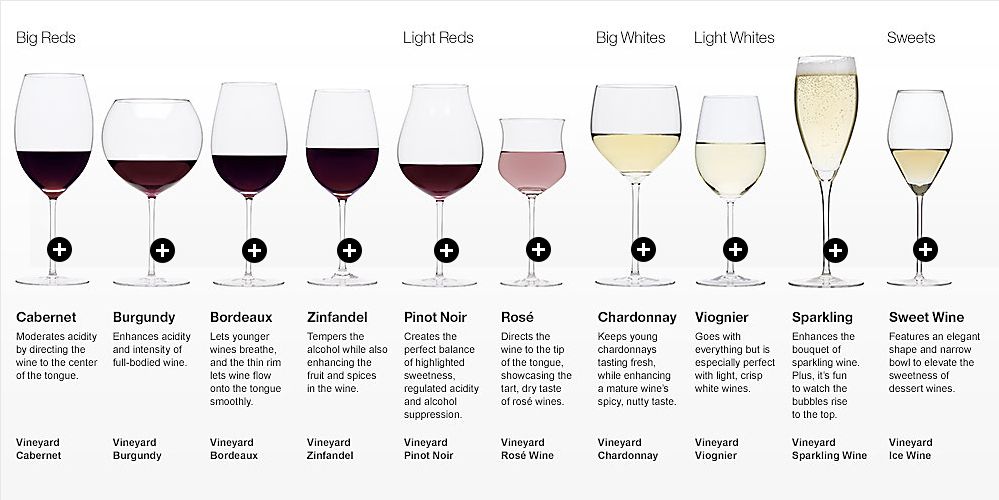
Different types of wine glasses are designed to enhance the drinking experience of various types of wines. The shape, size, and design of a wine glass can significantly impact the aromas, flavors, and overall enjoyment of the wine.
Here are some common types of wine glasses and their characteristics:
- White wine glasses: These glasses typically have a narrower bowl and a slightly tapered opening. This design helps preserve the delicate aromas of white wines and maintain their cooler temperature.
- Red wine glasses: Red wine glasses have a larger bowl with a wider opening compared to white wine glasses. This design allows red wines to aerate and breathe, enhancing the complex aromas and flavors found in red wines.
- Champagne & sparkling wine glasses: These glasses are characterized by their tall, narrow shape and elongated bowl. The shape helps retain the carbonation and direct it towards the nose, enhancing the effervescence and aromas of sparkling wines.
- Dessert wine glasses: These glasses are smaller and narrower than standard wine glasses. They are designed to showcase the concentrated aromas and flavors of sweet dessert wines.
- Universal wine glasses: These versatile glasses are designed to accommodate a wide range of wine styles, striking a balance between red and white wine glass designs. Some wine enthusiasts prefer using universal glasses that are suitable for both red and white wines. These glasses usually have a bowl that is somewhere between the sizes of red and white wine glasses, making them versatile options.
- Bordeaux wine glasses: Designed for full-bodied red wines like Cabernet Sauvignon and Merlot, these glasses have a broad bowl that directs the wine to the back of the mouth, emphasizing the fruit and minimizing the bitterness.
- Burgundy wine glasses: Ideal for delicate and aromatic red wines like Pinot Noir, these glasses have a wider bowl to enhance the wine’s fragrance and direct it to the tip of the tongue.
- Chardonnay wine glasses: With a slightly larger bowl and a tapered rim, these glasses are perfect for enhancing the creamy texture and complex aromas of Chardonnay.
It’s worth noting that within each of these categories, there can be variations based on specific wine regions, varietals, and personal preferences.
Using the appropriate type of wine glass can enhance the sensory experience and elevate the enjoyment of the wine.
Varietal-specific wine glasses: what are they and why do they matter?
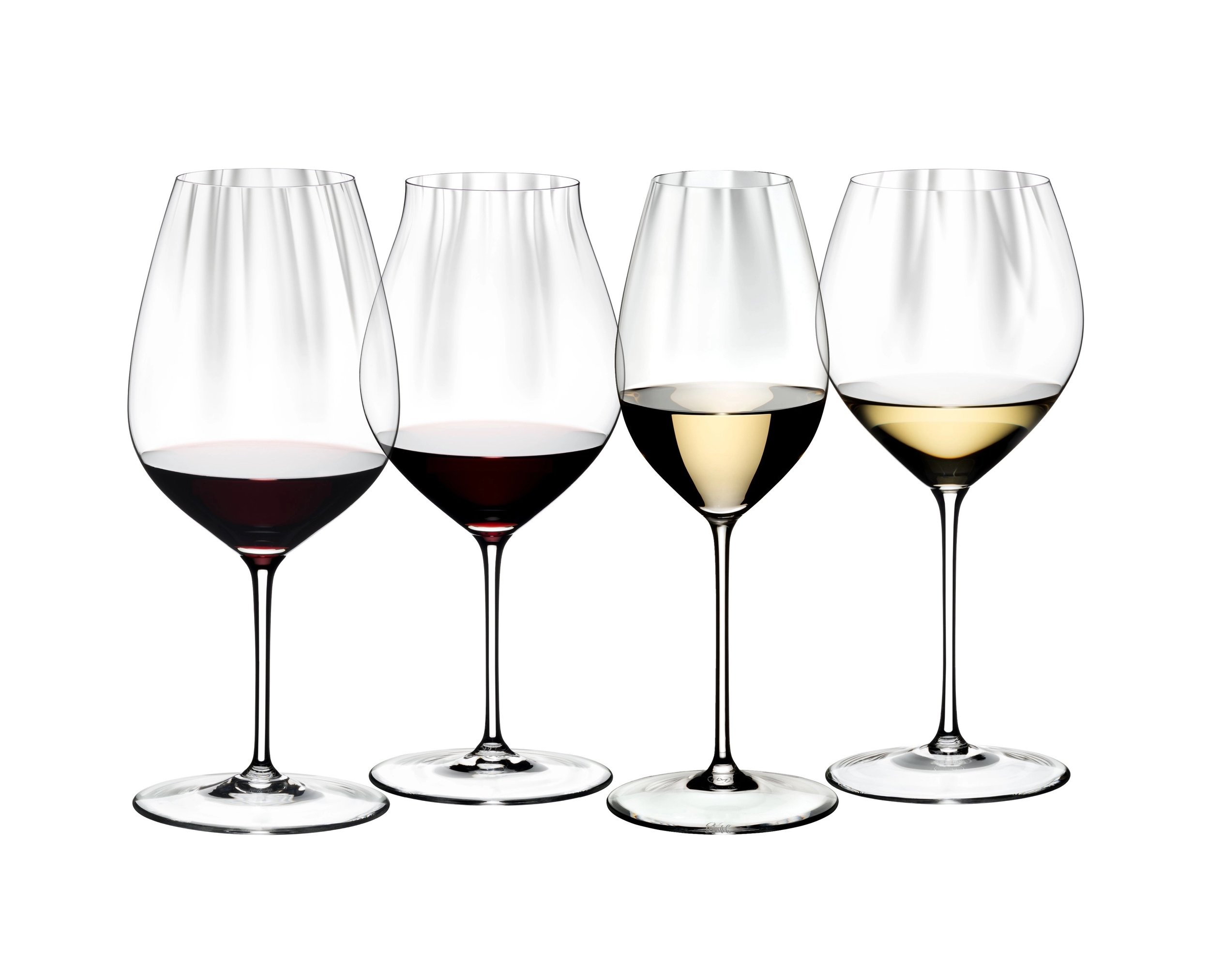
Varietal-specific wine glasses, often referred to as wine varietal glasses, are specially designed glassware that is tailored to enhance the sensory experience of specific types of wine.
These glasses are engineered to accentuate the unique characteristics of different grape varietals, optimizing the way aromas and flavors are perceived when the wine is consumed.
The shape and design of these glasses play a crucial role in concentrating and directing the aromas toward the nose and determining where the wine makes contact with the tongue, thus affecting how the wine is tasted.
The concept behind varietal-specific glasses is rooted in the idea that the shape of the glass can significantly impact the sensory perception of the wine.
These glasses are designed to channel the aromas of the wine to the drinker’s nose, allowing for a more pronounced and accurate scent experience.
Additionally, the shape of the glass can influence how the wine interacts with the palate, emphasizing certain flavor components and enhancing the overall taste profile of the wine.
The importance of varietal-specific glasses lies in their ability to showcase the distinct qualities of different grape varietals.
Different types of wine glasses, such as those designed for red wines, white wines, and even specific varietals like Cabernet Sauvignon, Pinot Noir, Zinfandel or Chardonnay and Sauvignon Blanc, are meant to highlight the strengths of each wine.
For instance, a glass designed for red wines might have a larger bowl to allow the wine to aerate and reveal its complex aromas, while a glass for white wines could have a narrower bowl to maintain the wine’s crispness.
Using the appropriate varietal-specific glass can elevate the overall enjoyment of wine by providing a more accurate representation of its characteristics.
Brands like Riedel are renowned for their extensive range of varietal-specific glasses, each meticulously designed to complement specific wine types.
Different types of White Wine Glasses
White wine glasses stand apart from red wine glasses in terms of their size and shape. The disparities are not arbitrary; they are finely tuned to accentuate the unique qualities of white wines.
A general observation reveals that white wine glasses tend to be smaller in both height and bowl size. This deliberate design choice brings the wine closer to the nose, where the lighter aromas can be more easily appreciated.
The dimensions of white wine glasses are meticulously crafted to optimize the sensory experience:
- Preservation of floral aromas: The smaller bowl of white wine glasses aids in preserving the delicate floral aromas that are often a hallmark of white wines.
- Temperature maintenance: The reduced bowl size also helps maintain a cooler temperature for the wine, ensuring that it remains refreshing and crisp.
- Accentuated acidity: White wine glasses are adept at emphasizing the acidity present in these wines, contributing to a more balanced taste.
- Aroma amplification: Proximity to the nose is a key factor in aroma perception. The smaller bowl ensures that even at cooler temperatures, the aromas are delivered effectively to the senses.
Sauvignon Blanc and Riesling white wine glass
The elegance of Sauvignon Blanc and Riesling wines finds its match in a specific style of white wine glass. Characterized by a mid-to-long stem and a narrow, tapering bowl, this glass design is carefully calibrated.
The narrower bowl aids in concentrating the wines’ aromatic complexities while minimizing exposure to oxygen. This preservation of freshness ensures that the vibrancy and liveliness of these wines are retained.
|
|
$143.14(-55%)
|
N/A
|
Chardonnay white wine glass
Chardonnay, a versatile white wine known for its diverse range of styles, commands its own specialized glassware.
Chardonnay glasses embrace a larger, reminiscent of those used for Burgundy or Pinot Noir. While the overarching purpose remains similar—to amplify the wine’s characteristics—the larger surface area and wider aperture allow oaky notes to harmonize.
However, the bowl is slightly smaller, and the stem is notably shorter. This design choice maximizes the surface area, making it perfect for indulging in full-bodied white wines like oak-aged Chardonnay.
As the wine interacts with the air, a symphony of flavors unfolds, captivating the palate with layers of complexity.
Viognier and Montrachet Chardonnay white wine glass
While the general trend leans towards smaller bowls for white wines, there are exceptions. Full-bodied white wines, such as oak-aged Chardonnay, Viognier, White Rioja, and even orange wines, fare better in glasses with larger bowls.
This departure from the norm is exemplified by the introduction of the “Montrachet” glass by Riedel.
Characterized by its wide mouth and generous bowl size, this glass design enhances the creamy texture often found in these wines.
|
|
|
N/A
|
Different types of Red Wine Glasses
The world of red wine glasses, with its rich tapestry of flavors and aromas, has prompted the evolution of glassware designed with scientific precision to unlock its full potential.
The expansive bowl creates ample surface area, allowing the wine to interact harmoniously with oxygen. As the wine swirls within the bowl, it breathes, a process that draws forth the intricate symphony of aromas and flavors concealed within.
This oxygen interaction, facilitated by the wide-rimmed expanse, mellows the sometimes-intense tannins, ensuring a smoother, more palatable experience.
Notably taller and broader than their white wine counterparts, red wine glasses prioritize the profound exchange between wine and air.
Gone are the days of the one-size-fits-all glass. Today, glassware manufacturers craft bespoke creations tailored to specific grape varieties and regional nuances.
For the aficionado with a penchant for Pinot Noir or a craving for Cabernet Sauvignon, specialized red wine glasses accentuate the wine’s strengths, enhancing its distinctive attributes.
Bordeaux or Cabernet wine glasses
Renowned as a universal choice for red wines such as Cabernet Sauvignon, Merlot, Cabernet Franc, or Bordeaux Blends, boast a commanding presence. Characterized by a statuesque stem and a voluminous bowl, these glasses offer an expansive surface area for the wine to respire and evolve.
This configuration encourages aeration as you gently swirl the wine along the rim. Tailored for wines sourced from thicker-skinned grapes, such as Bordeaux blends, this design welcomes oxygen infusion, allowing the wine to unfold its intricate characteristics.
Aromas play a pivotal role in the tasting experience, and the shape of the bordeaux glass concentrating them towards the rear of the tongue and minimizes their astringency.
For optimal results, consider using a wine decanter to allow the wine to breathe before it graces your glass.
Burgundy or Pinot Noir red wine glasses
The burgundy glass, with its distinctive fishbowl contour, is an ode to finesse. This shape aptly captures the full-bodied wine’s aromas, orchestrating a harmonious interplay between intensity and subtlety.
Wines deriving from thin-skinned grapes, such as those found in Burgundy, exude aromas more readily. Consequently, less swirling is required to relish their aromatic bouquet. The narrowed rim of the glass guides the wine towards the center of your palate, tempering acidity and ensuring a balanced tasting experience.
Syrah / Shiraz / Sangiovese / Malbec red wine glasses
Characterized by its shorter stature and a compact bowl, this style of glass is tailored for medium to full-bodied red wines. Its purpose lies in the gentle modulation of bold flavors and intense spices.
This effect is achieved by the deliberate design of allowing the wine to make contact with your palate in a gradual manner through the smaller opening.
The slightly more pronounced tapering of the bowl plays a vital role in ensnaring the wine’s aromatic bouquet, enhancing the sensory experience for every discerning sip.
Zinfandel red wine glasses
Zinfandel glasses are meticulously designed to accentuate the vibrant interplay between fruitiness and spiciness.
Having a narrow opening and a refined bowl, these glasses guide the wine to your palate with finesse. This approach tempers the potency of ethanol, which can be pronounced in Zinfandel variety with a higher alcohol content.
Furthermore, the structure counterbalances potential tannins, ensuring a well-rounded tasting experience that highlights the wine’s true essence.
Riesling and Zinfandel glass from the well-established Vinum collection. Its shape enhances the characteristic bouquet of fruity red wines or floral white wines.
Champagne wine glasses
Bubbles, the epitome of celebration, have a longstanding tradition of being served in tall, taper-free flutes.
The design of Champagne or sparkling wine glasses is rooted in the desire to preserve the effervescence and direct the bubbles to the tip of the tongue, where their liveliness can be fully experienced. However, a spirited debate persists among fizz enthusiasts.
Some champion the idea that Champagne, the pinnacle of bubbly, might find its true potential in saucers or even white wine glasses.
But behind this aesthetic allure lies a purpose that transcends mere appearances. The contours of these glasses wield a profound influence over the intricate flavors concealed within sparkling wine and champagne, culminating in an experience that surpasses the superficial.
Ultimately, the verdict lies within the realm of personal preference.
Here are some of the most common champagne wine glasses:
- Flute champagne glass: With its poised elegance, takes center stage. Its elongated, upright bowl stands as a testament to its commitment to maintaining the integrity of the wine’s carbonation. This design marvelously captures the essence of the liquid, letting it dance upon the palate without forfeiting its vivacity. The discreet bead nestled at the base of the glass orchestrates a mesmerizing choreography, coaxing bubbles to ascend in a breathtaking display.
- The coupe champagne glass: Flaunting its unique profile—a shallow, broad bowl atop a delicate stem. This vintage gem, harking back to the exuberance of the 1920s, was once the vessel of choice for dessert champagne infused with syrupy opulence. Its role as a contemporary favorite has dimmed somewhat due to its proclivity to accelerate bubble dispersion and aroma dissipation. Yet, the coupe glass remains a coveted selection for themed soirées, harboring just the right amount of liquid for measured indulgence.
- The tulip wine glass: Its nomenclature derived from the exquisite curvature of its bowl. Tapering gently towards the rim, this vessel presents a slimmer base that elegantly widens midway before tapering once again. Its architectural ingenuity channels the effervescence in a manner that shuns flatness, holding it in a tantalizing embrace. As the carbonation embarks on its ethereal journey, the captivating aromas are directed with precision, a sensory navigation that culminates in a lavish flourish of taste.
|
|
|
|
Rosé wine glasses
Rosé, the embodiment of elegance, demands a glass that complements its delicate character. Glasses with narrow bowls and long stems are the preferred vessel for rosé, allowing its nuanced aromas to unfold gracefully.
However, white wine glasses can also do justice to this blushing beauty.
- Youthful rosé glasses: Youthful rosé wines, brimming with vibrancy, thrive in glasses with flared lips. This design choice channels the wine’s crisp flavors to the tip of the tongue, where the most sensitive taste buds reside. The result is a tasting journey that amplifies the wine’s lively character.
- Mature rosé glasses: As rosé wines mature, their nuances deepen and evolve. To truly appreciate their full spectrum of flavors, a slightly tapered glass with a short, rounded bowl and a long stem emerges as the ideal companion. This design choice guides the aromas to the glass’s apex, offering a sensorial feast for those seeking to savor every note.
The Riedel rosé glass, designed with an elongated, diamond-shaped bowl, emerges as a frontrunner in capturing the bouquet and freshness of rosé wines.
Its thoughtful design accentuates the fruity notes and tempers the acidity, providing a silky smooth experience for the palate.
|
|
$64.67 ($16.17 / Count)
|
Dessert wine and Port wine glasses
Dessert wines and Port wines, renowned for their flavors, claim a dedicated realm in the world of wine glasses. Enter the realm of dedicated dessert and Port wine glasses – small vessels with a highly tapered rim.
These glasses are meticulously crafted to coax out the intricate flavors of dessert wines and Port, allowing them to unfold at a steady pace.
Their design harmonizes with the intensity of taste profile, creating a symphony for the senses that resonates with enthusiasts.
These are the most common dessert and Port wine glasses:
- Distinguished Port glasses: Often referred to as dessert wine glasses, Port glasses stand as a testament to the marriage of form and function. Recognizable for their diminutive size, they reflect the understanding that Port’s elevated alcohol content warrants a smaller pour. The compact stature of the glass plays a dual role, preserving the aromatics in the round bowl while benefiting from the warmth of one’s hand, creating an environment for nuanced savoring.
- Exquisite Sherry glasses: Sherry, the after-dinner delight, finds its perfect match in a miniature white wine glass. The design, characterized by a small bowl and narrow mouth, proves instrumental in capturing the complexity of Sherry’s aromas. A long stem serves as a guardian against warm hands that might elevate the wine’s temperature, ensuring a harmonious tasting experience.
|
Description: Crafted from durable Tritan crystal and bearing the signature of renowned architect Álvaro Siza Vieira. |
Description: Includes 4 stemmed glasses designed for Port, Sherry, and more, adding beauty and elegance to your table. Makes a perfect gift. |
Description: Enhances the complexity and elegance of Port wines, emphasizing its rich aromas and intricate flavors. Tailored for a superior tasting experience. |
Description: Meticulously designed fine crystal glassware specifically crafted to highlight the rich aromatic profile of Port wines. |
Crafted from durable Tritan crystal and bearing the signature of renowned architect Álvaro Siza Vieira.
Includes 4 stemmed glasses designed for Port, Sherry, and more, adding beauty and elegance to your table. Makes a perfect gift.
Enhances the complexity and elegance of Port wines, emphasizing its rich aromas and intricate flavors. Tailored for a superior tasting experience.
Meticulously designed fine crystal glassware specifically crafted to highlight the rich aromatic profile of Port wines.
Universal wine glasses
While adhering to varietal-specific stemware is ideal, the consensus among most sommeliers remains: when unsure, opt for the universal wine glass.
Characterized by moderate bowl sizes, stems, and bases, these adaptable glasses are particularly fitting for those constrained by storage space.
Irrespective of wine type or event, they flawlessly accommodate red, white, and effervescent libations. Should circumstances permit only one glass type, all-purpose wine glasses present an effective remedy.
While not replicating the precise experience of varietal-specific glasses, these alternatives deliver comparable utility at a lower cost, streamlining the experience. Revel in wine’s nuances without splurging on multiple glass varieties.
There are two categories of universal wine glasses:
- With stem: The stem of a wine glass, often overlooked, plays a pivotal role in proper wine service. It aids in maintaining wine temperature and facilitates aroma release through swirling. All-purpose wine glasses equipped with stems possess a bowl shape between red and white wine counterparts, supported by an intermediary stem length. This versatility caters to both red and white wine preferences.
- Stemless wine glasses: Stemless wine glasses discard traditional elegance in favor of stability and reliability. They harmonize seamlessly in casual and formal, contemporary settings. Notably, stemless glasses alleviate the apprehension of correct traditional wine glass handling. While maintaining bowl shapes akin to stemmed counterparts, stemless glasses may lead to slightly accelerated wine warming.
|
|
£70.30 (£35.15 / count)
|
|
Tips on how to choose the perfect wine glass
Selecting the right wine glass doesn’t need to be overwhelming. Here are some tips to consider:
- Glass Shape: Choose a glass shape that complements the wine you’re drinking. The right shape can enhance the wine’s aromas and flavors.
- Material: Opt for lead-free crystal or glass. Crystal glasses are thinner and can enhance the sensory experience, but quality glassware can also provide an excellent wine-drinking experience.
- Size Matters: Consider the size of the glass. It should be large enough to allow for proper aeration but not so large that it overwhelms the wine.
- Stemmed vs. Stemless: Stemmed glasses are preferred as they prevent the heat from your hand from affecting the wine’s temperature. However, stemless glasses are more casual and easier to store.
- Consider the Occasion: Different occasions call for different glasses. Formal dinners may warrant specific varietal glasses, while casual gatherings can utilize universal glasses.
Exploring the best wine glass producers
- Riedel: Renowned for its varietal-specific glassware, Riedel is a pioneer in the field. Their glasses are meticulously crafted to enhance the characteristics of specific wine types.
- Zalto: Hand-blown and lead-free, Zalto glasses are favored by sommeliers for their thin, elegant design that allows wines to shine.
- Spiegelau: Known for its affordability and durability, Spiegelau produces glasses that are both functional and aesthetically pleasing.
- Schott Zwiesel: Using Tritan crystal, Schott Zwiesel creates glasses with exceptional clarity and resilience, suitable for both casual and formal occasions.
- Baccarat: A symbol of luxury, Baccarat produces exquisite crystal glasses that add glamour to any wine-drinking experience.
- Gabriel-Glas: Known for its “One for All” glass, Gabriel-Glas aims to simplify glassware choices by creating a design that suits all wine types.
- Waterford: Combining tradition with innovation, Waterford produces elegant glasses that add a touch of sophistication to wine enjoyment.
Conclusion
As you embark on your wine-tasting journey, remember that the glass you choose can greatly enhance the experience.
By understanding the various types of wine glasses, exploring reputable producers, and keeping a few key tips in mind, you’ll be well-equipped to savor every nuance and flavor of your favorite wines.
So, raise your glass to the art of wine appreciation, where every sip tells a story, and every glass is a vessel of possibility.
Our Expertise
Valentina Silovic is a sommelier and content creator with over a decade of experience in the wine industry.
For this article, she collaborated with Dario Drmac, a wine entrepreneur renowned for his innovative digital approach, and Nenad Trifunovic, an esteemed moderator, wine workshop educator, and dedicated advocate for wine-drinking culture.
Their combined experience and insights contribute significantly to the depth and authority of the content presented.
Want to meet the team, seek recommendations, and discover in-depth insights into our product testing and reviews? Click here now!






